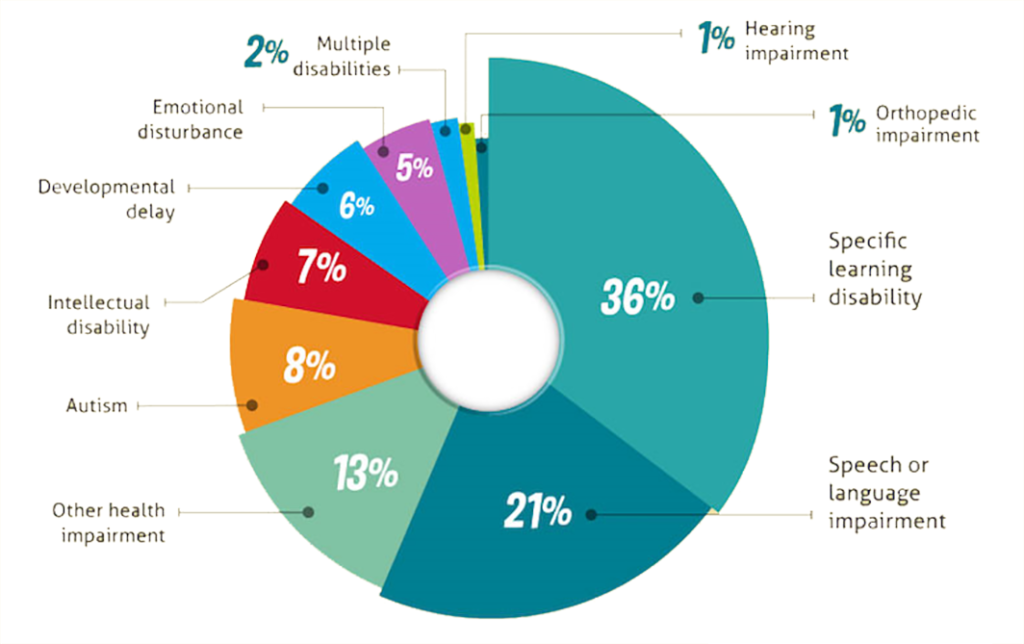“Everyone is a genius. But if you judge a fish by its ability to climb a tree, it will live its whole life believing that it is stupid.” – commonly attributed to Albert Einstein
One of Albert Einstein’s most commonly attributed quotes involves the outlandish analogy of a fish climbing a tree to represent the improper merit of one’s intelligence and their learning process. It’s impossible to expect a fish to adapt and climb a tree just as it should be impossible to expect a special needs student with an intellectual disability to think and learn the same exact way as someone who doesn’t. While the comparison is exaggerated, the opening statement holds true. Students with intellectual and/or learning disabilities are often quite intelligent, but their distinct process of absorbing and retaining information can completely determine the learning method that is best suitable. How can someone with a mind that functions differently be expected to learn in a traditional classroom setting? It’s simple, they can’t and technology is catching up.
According to researchers at the University of Cincinnati, studies show that the current percentages of individuals with disabilities in the United States are as follows:

Chart Graphic Courtesy of the University of Cincinnati
Academic administrations are finally taking notice of individuals who are learning and adapting to the world in completely different ways. Education is beginning to reflect them and classroom technology (also known as assistive technology) is beginning to cater to the various types of students. A young student living with a mid- to higher-functioning disability can now learn material and retain information using technology that is specifically designed to correspond with their particular mindset. Basic social interaction with peers and essential material can be learned in an entirely new manner that further benefits those students currently while also preparing them for the road ahead. Assistive technology is providing for those who require extensive care.
Instructors have been using the many available assistive technologies in class which include light signals, touch screens, screen readers and magnifiers, text-to-speech, wands/joysticks, alternate keyboards, voice recognition, and many more. These established developments have changed the way students can be taught for quite some time and are common assets for classrooms across the country. However, these technologies resonate well with special needs students in particular because they can be specifically attributed to their own personal needs. While these devices and features have been around for years, it is the different apps and extensions being made currently compatible with them that is bringing a healthy flow of progress in special education. Google provides a number of different apps and extensions specifically intended for these purposes with countless more currently in development and made readily available through the usage of Chromebooks.
Apps and extensions are a wonderful addition to the special education community, but they are only as good as the technology in which it is compatible. It is important for these additions to correspond with the curricular material and what it requires, but the proper technology is essential in implementing these capabilities into a classroom setting. By allowing these apps and extensions to enhance assistive technologies, a special needs classroom can reach its full potential with an enhanced learning environment.
Major tech manufacturers are responsible for products that are compatible with assistive technology such as ViewSonic, Lenovo, HP, Xerox, etc. with many apps available to run using Chrome and Android. Interactive Flat Panels (IFP) are becoming gradually more common in class because of the student-teacher engagement that is evoked from interactive participation and their compatibility with much of the assistive software. Manufacturers like ViewSonic are known for panels in this field. Because of their visual/interactive nature, students with disabilities are finding them to be an effective learning tool while administrators are taking note of their appeal. These devices often promote a collaborative environment between students and their instructors. More recently, classrooms have been emphasizing the importance of a 1:1 computing initiative that focuses on individual laptop devices for each student to use in and out of class. In a special needs setting, students can use the specialized software to assist their learning at home in a way that both makes sense and reflects what was done in class. This ensures that the students can continue to review the material even after leaving campus. But who teaches the teachers? Learning how to navigate these new technologies and utilize their many capabilities can be a somewhat daunting task.
Special education thrives on a strategically-planned and well-executed curriculum. Certified technicians offering their own professional services will allow both the IT team and the teachers to understand how to use these apps and devices to their fullest extent so that they can breathe life into the material. These outstanding developments and a proper understanding of how they can best be used make it so crucial for the faculty and administration responsible for creating the curriculum to work alongside the technology staff and remain in healthy communication. Special education is experiencing a massive shift with the introduction of so many new and innovative possibilities. What once seemed impossible is now highly probable.

